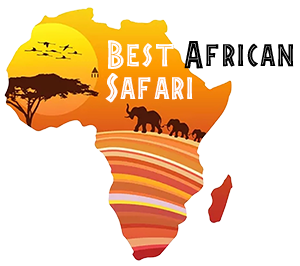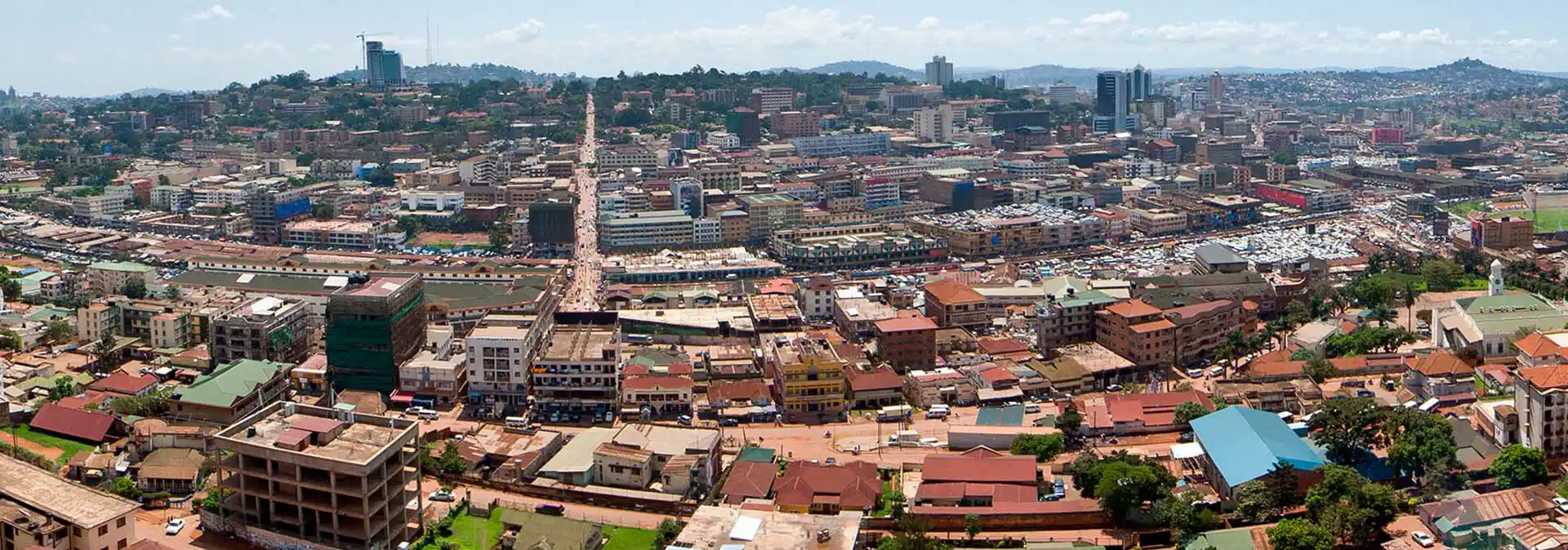Uganda
Uganda, officially the Republic of Uganda, is landlocked and bordered to the east by Kenya, to the north by South Sudan, to the west by the Democratic Republic of the Congo, to the southwest by Rwanda, and the south by Tanzania. The southern part of the country includes a substantial portion of Lake Victoria, shared with Kenya and Tanzania. Uganda is in the African Great Lakes region, lies within the Nile basin, and has a varied but generally modified equatorial climate. As of 2023, it has a population of around 49.6 million, of which 8.5 million live in the capital Kampala which is also the largest city.


Uganda is named after the Buganda kingdom, which encompasses a large portion of the country’s south, including the capital Kampala, whose language Luganda is widely spoken throughout the country. From 1894, the area was ruled as a protectorate by the United Kingdom, which established administrative law across the territory. Uganda gained independence from the United Kingdom on 9 October 1962. The period since then has been marked by conflicts, including an eight-year-long military dictatorship led by Idi Amin.
The official language is English, although the Constitution states that “any other language may be used as a medium of instruction in schools or other educational institutions or for legislative, administrative, or judicial purposes as may be prescribed by law.” Luganda, a central region-based language, is widely spoken across the Central and Southeastern regions of the country, and several other languages are also spoken including Ateso, Lango, Acholi, Runyoro, Runyankole, Rukiga, Luo, Rutooro, Samia, Jopadhola, and Lusoga. In 2005 Swahili, which is foreign and so viewed as being neutral, was proposed as Uganda’s second official language, but this has yet to be ratified by parliament. However, in 2022 Uganda decided to make Swahili a mandatory subject in the school curriculum.
Uganda’s current president is Yoweri Kaguta Museveni, who took power in January 1986 after a six-year guerrilla war and is still the sitting president.
Did you know Uganda lost part of its territory to Kenya and Sudan?
On April 1, 1902, the process to transfer the Eastern Province of Uganda to the East African Protectorate (Kenya) was started. Uganda’s entire Eastern Province was transferred to the East Africa Protectorate (present-day Kenya). The British wanted to keep the Uganda Railway, which would connect the port city of Mombasa to the city of Kisumu on Lake Victoria, under a single colonial authority. Sudan also received part of Ugandan land as its leaders facilitated easier access to Lake Rudolf (now called L. Turkana).
The area in question lay approximately between the present eastern frontier of Uganda and a line running northward from a point where the boundary between British and German territory crossed longitude 36° east and turned northeast.
It included, according to H. B. Thomas, a historian of Uganda, in the 1935 edition of the Uganda Journal, “lakes Naivasha, Elmenteita, Nakuru and Baringo in the Uganda Protectorate before veering gradually north again to follow the line of longitude 36° 45’ east”.
Independence (1962 to 1965)
Uganda gained independence from the UK on 9 October 1962 with Queen Elizabeth II as head of state and Queen of Uganda. In October 1963, Uganda became a republic but maintained its membership in the Commonwealth of Nations.
The first post-independence election, held in 1962, was won by an alliance between the Uganda People’s Congress (UPC) and Kabaka Yekka (KY). UPC and KY formed the first post-independence government with Milton Obote as executive prime minister, with the Buganda Kabaka (King) Edward Muteesa II holding the largely ceremonial position of president.
Uganda is one of the poorest nations in the world. In 2012, 37.8 per cent of the population lived on less than $1.25 a day. Despite making enormous progress in reducing the countrywide poverty incidence from 56 per cent of the population in 1992 to 24.5 per cent in 2009, poverty remains deep-rooted in the country’s rural areas, which are home to 84 per cent of Ugandans.
Air transportation
There are 35 airports in Uganda. Commercial airlines operate scheduled passenger services out of four airports. Uganda currently has one functioning international airport, Entebbe International Airport, which is located 25 miles (40 km) southwest of Kampala. In 2017, the airport traffic hit 1.53 million passengers, 8% more than the previous year. A second international airport, Hoima International Airport, is currently under construction.
Road network
Road transportation is the most important way of transportation in Uganda. 95% of freight and passenger traffic is handled by road traffic. The road network in Uganda is approximately 129,469 km long. About 4% of these roads are paved which equates to only about 5,300 kilometres of paved road. The national roads make up about 17% of the road network but carry over 80% of the total road traffic. In Uganda, there are 2,3 million motor vehicles in Uganda.
At the moment Uganda has some of the poorest roads of the 3 countries we operate in.
Railroad
The rail network in Uganda is approximately 1,260 kilometres long. The longest lines are the main line from Kampala to Tororo is about 249 kilometres, the western line from Kampala to Kasese is about 333 kilometres, the northern line from Tororo to Pakwach is about 641 kilometres.
Communications
There are around 24 to 30 telecommunications companies in Uganda, from major players to the smaller ones, and the number fluctuates a little up and down, but the two biggest are MTN and Airtel. More than 95 per cent of internet connections are made using mobile phones.
Energy
Uganda is richly endowed with abundant energy resources, which are fairly distributed throughout the country. These include hydropower, biomass, solar, geothermal, peat and fossil fuels.
In the 1980s, the majority of energy in Uganda came from charcoal and wood. However, oil was found in the Lake Albert area, totalling an estimated 95 million cubic metres (3.4×109 cu ft) of crude. Heritage Oil discovered one of the largest crude oil finds in Uganda and continues operations there.
Uganda and Tanzania signed a deal on 13 September 2016 that will see the two countries build a 1,445 km, $3.5bn crude oil pipeline. The first 5.000 pieces of the pipeline arrive in Tanzania in November/December 2023. The Uganda–Tanzania Crude Oil Pipeline (UTCOP), also known as the East African Crude Oil Pipeline (EACOP) will be the first of its kind in East Africa, will connect Uganda’s oil-rich Hoima region with the Indian Ocean through the Tanga port in Tanzania.
Education
Uganda’s educational system, while lacking in many areas, has seen significant change since the late 1990s. The educational system is set up so that children spend seven years in primary school, six years in secondary school, and three to five years in post-secondary school. In 1997, the government declared that primary school would be free for all children. This amendment has had huge benefits. In 1986, only two million children were attending primary school. By 1999, six million children were attending primary school, and this number has continued to climb. Following significant gains in access to primary education since 1997 when universal primary education (UPE) was introduced, Uganda in 2007 became the first country in sub-Saharan Africa to introduce universal secondary education (USE). This bold step by the Government of Uganda led to an increase in lower secondary enrolment of nearly 25% between 2007 and 2012.
Health
There were eight physicians per 100,000 persons in the early 2000s. Uganda’s elimination of user fees at state health facilities in 2001 has resulted in an 80 per cent increase in visits, with over half of this increase coming from the poorest 20 per cent of the population. This policy has been cited as a key factor in helping Uganda achieve its Millennium Development Goals and as an example of the importance of equity in achieving those goals. Despite this policy, many users are denied care if they do not provide their own medical equipment, as happened in the highly publicised case of Jennifer Anguko. Poor communication within hospitals, low satisfaction with health services and distance to health service providers undermine the provision of quality health care to people living in Uganda, particularly for those in poor and elderly-headed households. The provision of subsidies for poor and rural populations, along with the extension of public-private partnerships, have been identified as important provisions to enable vulnerable populations to access health services.
Tourism
Tourism in Uganda is focused on Uganda’s landscape and wildlife. It is a major driver of employment, investment and foreign exchange, contributing 4.9 trillion Ugandan shillings (US$1.88 billion or €1.4 billion as of August 2013) to Uganda’s GDP in the financial year 2012–13. The Uganda Tourism Board is responsible for maintaining information about tourism in Uganda. The main attractions are photo safaris through the National parks and game Reserves. Other attractions include the Mountain Gorillas found in Bwindi Impenetrable National Park (BINP) and Mgahinga Gorilla National Park (MGNP), Uganda has some of the oldest cultural kingdoms in Africa and has many Cultural sites. Uganda is a birding paradise boasting a massive bird list of more than 1073 recorded bird species ranking 4th in Africa’s bird species and 16th internationally. Uganda has landscapes ranging from white-capped Rwenzori mountains to the Great Rift Valley.
Good to Know
Read the basic info and also some fun facts about Kenya! Here you will find everything you want to know about Uganda!
Images from cities in our program
A few images from the parks, mountains, hotels, beaches and more in Uganda.
Leave a Reply
Do you have some comments or questions for us? We’d love to hear from you! Don’t be shy! Feel free to drop us a message!















